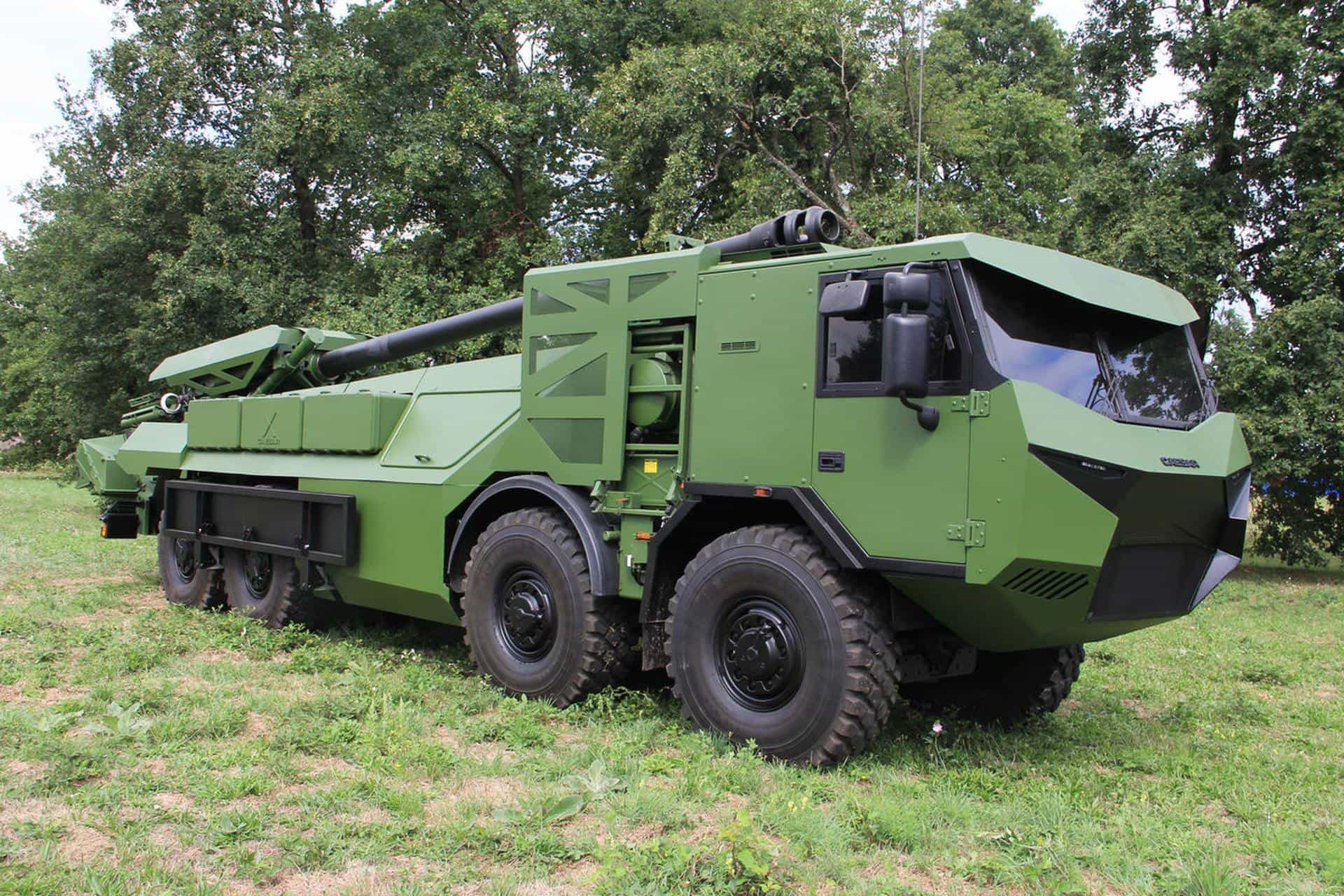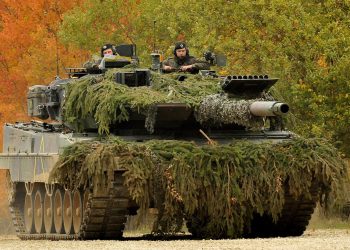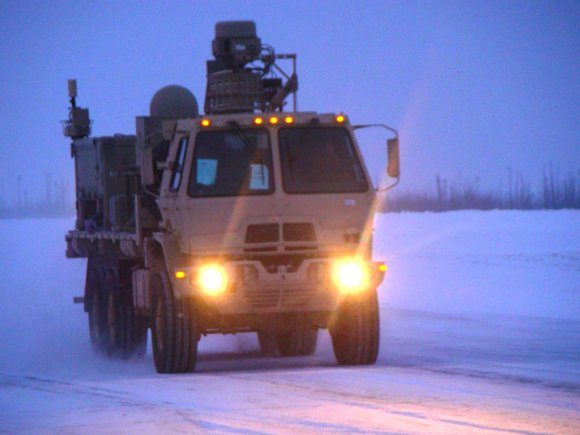The Army G-8 addressed the status of the service’s top modernization portfolios, ground combat vehicle, aviation and the network and reiterated the number-one priority would remain Soldier protection.
Speaking to members of the Association of the U.S. Army at its March Institute of Land Warfare breakfast, Lt. Gen. Robert P. Lennox first grabbed the audience’s attention by debunking what he called some of the myths of Army modernization.
ARMY MYTHS
The biggest myth, Lennox said, was the perception the Army had lived “high on the hog and now it’s time to do something else with your money.”
“I just want to remind folks that it wasn’t long ago that we were living in the Army of 2001,” he said. “And, in that Army we had a $56 billion shortfall or 2001 holes in the yard. Life wasn’t good in the Guard and the Reserve and it wasn’t so good in the active force.
“It’s taken Congress, industry and Army leadership to get where we are today and that’s something important not to forget,” he continued, adding that leadership responded to the needs of Soldiers in a flexible way, in an inflexible situation.
The second myth is the belief that the Army can’t acquire anything. He cited a number of successes, including the Stryker Double-V Hull which just two years ago didn’t exist. It was a concept of industry that brought the idea to service leadership because of the number of casualties the Army was taking, Lennox said.
“We took the idea to Army leadership and to the Hill and got support everywhere we went and today, Soldiers are driving the Stryker Double-V Hull in combat,” he said. “There have been 40 times, as of about a week ago, that Soldiers have been hit resulting in three significant casualties. Before that, every vehicle, every hit was catastrophic.
“It’s an example of what can happen when industry, leadership, Congress and the Office of the Secretary of Defense all come together and make those things happen with our Soldiers in mind,” Lennox added.
Lennox said the final myth is that America’s whole strategy has shifted to anti-access/aerial denial and that there’s no role for the Army in that; let’s just invest in the Navy and Air Force.
“It’s not to say we don’t need to invest in the Navy and Air Force, there are a lot of reasons to do that, but I’m here to talk about what if we get it wrong (by not investing in the Army),” he said, reminding the audience that after World War II, the country focused on nuclear war with the Soviet Union where the U.S. wouldn’t need a ground Army anymore.
“What did we get but a conventional war in Korea and after Korea we still had the threat of a strategic nuclear war with tactical nukes, and what did we get but protracted counter-insurgency in Vietnam,” Lennox said.
“After Vietnam we had to be posed for the big fight in the central European plains against Warsaw Pact forces, but what did we get but Desert Storm,” he continued. “Thankfully, the work and preparation we did for that fight in Europe helped us in Desert Storm and we were successful. Then after the Gulf War, we were going to fight conventional wars with rogue states; we were going to fight two wars at the same time. We did get that, one major unconventional war in Afghanistan and a protracted counter-insurgency fight in Iraq.”
“The bottom line is we always get it wrong. We predict the future to give us an idea, guidance in our decision-making and investments, but we get it wrong,” he added. “We can’t afford to get it wrong. We have to make sure that at least in the area of modernization, we cannot afford to be wrong.”
TODAY & FUTURE ARMY MODERNIZATION
In research, development and acquisition accounts the Army has gone from a fiscal year 2012 budget of $26 billion down to a fiscal year 2013 budget of $24.3 billion, which effectively canceled eight programs. The Army went from lowest priority and worked up, delaying or restructuring 89 other programs while protecting 10 priority programs.
“We built our priorities, we funded our priorities and we’ve stuck with our priorities,” said Lennox. “Protecting Soldiers as they fight is the number-one priority.”
The general again cited the Stryker Double-V, the latest improved mine-resistant, ambush-protected vehicles, known as MRAPs, nine changes to body armor, three new sniper weapons, the M4A1, which is about to be fielded and has three additional improvements over the M4, the use of unmanned aerial vehicles, light-weight crew-served weapons, precision munitions and up-armored, medium and heavy trucks.
GROUND COMBAT VEHICLE PORTFOLIO
Presently the Army’s number-one motorized priority remains the Ground Combat Vehicle, or GCV, which leadership continues to evaluate. Aside from cost, current requirements are that it have growth potential, be capable of carrying a squad of nine and be built within seven years.
Lennox said the Army’s search for a GCV includes assessing developmental vehicles as well as non-developmental vehicles, or those already in use by other countries such as Sweden, Israel and Germany.
The GCVs are intended to replace the fleet of M113 tracked armored personnel carriers which were first introduced in Vietnam in 1962. Lennox said the M113 had played an enormous role in a number of different formations, mostly in the heavy brigade combat team as a command and control vehicle. The Army expects analysis complete by summer, he said.
“We have a number of possible replacements, turret-less Bradley, take the turret off and you get some exciting aspects,” he said. “I’ve given the PM (program manager) a target of about a million a copy. That’s our goal, to keep the price of this vehicle down and give us the best you can at that price.”
He added that the Abrams M1A2 and the Bradley non-IFV are the “best two tanks in the world, but need upgrading. Lennox said both will receive upgrades that include network integration as well as improved electronics, armor and suspensions.
The Stryker will also be upgraded as will the Paladin PIM which is on-track to replace the M109A6 howitzers.
AVIATION MODERNIZATION
Moving to the aviation portfolio, Lennox said the Army would be “touching every single aviation platform” which includes cockpit and sensor upgrades to the Kiowa Warrior OH-58.
Every aspect from providing the LUH (light utility helicopter) for Guard and Reserve use in a homeland defense role to improvements in the Apache AH-64 Block III Longbow and the CH-47F Chinook will be touched, Lennox said.
Lennox said the Army was also improving on each of the unmanned aerial systems.
“The Shadow workhorse is a huge contributor on the battlefield today,” he said. “When you talk to any brigade commander, he’ll tell you they love the Shadow — just need five or 10 more of that capability so there’s a constant demand for them.”
Gray Eagle will also be rolling out, Lennox said, and will serve as an update to the highly regarded Predator. It can cover everything from wide-area intelligence reconnaissance to convoy and improvised-explosive-device detection and defeat, close air support, communications and weapons delivery.
NETWORK INTEGRATION
With regard to the network, Lennox said the Army has converged onto a single path that’s more affordable than what was to be the “revolutionary” Future Combat Systems network back in 2008 and 2009.
The Warfighter Information Network Tactical serves as the backbone to the network and brings command and control down to the company level. Lennox said increment two gives the Army the first battle command on-the-move capability. A spring Network Integration Evaluation to test the system will be conducted at Fort Bliss, Texas, he said.
The Joint Tactical Radio System, or JTRS, is already in use by the 75th Rangers, said Lennox, adding that he’s hearing good things about the system. JTRS includes a man-packable system, the rifleman radio, NET Warrior systems and serves as a replacement for the Ground Mobile Radio, or GMR. The new JTRS system is now termed the Mid-Tier Networking Vehicle Radio or MNVR.
Lennox concluded that most changes will be “incremental improvements that the Army was not looking for revolutionary change.”
Lennox has been nominated to serve as the DOD principal deputy director of Cost Assessment and Program Evaluation.











